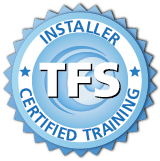
Certified fiber to the antenna/tower installer training course is designed for those who install and test fiber optic cables installed within antenna towers. It identifies you as a tower installer with practical knowledge of fiber optic theory, codes, standards and practices widely accepted in the wireless telecommunications industry. In addition, this training incorporates two days of individual hands-on training validating installer skills, including fiber cable installation, OTDR testing, connector cleaning, and loss prevention. These skills are applicable to all the requirements to safely and competently install, maintain and test fiber optic antenna systems.
In this course, we discuss various designs, installations, maintenance, and testing and troubleshooting techniques. This course gives students a practical understanding of fiber optic technology and the skills needed to install, test, and maintain fiber optics in Antenna and Tower applications.
Students must pass exam to be certified.
ETA FOI Certification
NETA Recognized
TR-FTAI is approved for 8 CTDs
This fiber optics for the Antenna/Tower Installer training prepares the installer for installing and maintaining high-performance optical networks and cabling components in the antenna and tower environment.
Lectures are self-paced and provide valuable information that will help you pass the certification exam. Online access is accessible for 1 year from the date you register. The lecture portion of this class is online and self-paced through our Learning Management System. Students receive a personal login to the platform providing access to lectures, study guides, practical exam, practice tests and technical exam. We recommend that the students complete the lecture before attending class. Lectures prepare students for the instructor led hands-on lab portion of the course. On the last day of the class each student will take a 75-question multiple choice test and if they pass, they will receive their certification in 2-3 weeks. Approximate time needed to complete lectures: 16-20 hours.
Lectures
TL-01B – OSP Loose Tube Armored Cable Preparation
TL-01E – Buffer Tube Fan Out Kit (BTFO)
TL-02A – Fusion Splicing
TL-03A – Mechanical Splice Connector
TL-03F – Splice-On Connector (Single Mode)
TL-04A – Mechanical Splice
TL-05A – Pigtail Fusion Splice
TL-06A – Power Meter & Light Source Testing
TL-07A – Optical Time Domain Reflectometer (OTDR) Testing
TL-12A Wall Mount Segment Assembly (Pigtails) & Testing
TL20-A – Determining Power and Loss Budgets
Knowledge or experience in the areas of Fiber Optic Advantages and Applications, Cables, Connectors and Terminations, Enclosures and Panels, and Test Equipment would be helpful, but is not required.
Certified Fiber to the Antenna / Tower Installer is designed for new or experienced tower technicians seeking a deeper understanding of the installation of fiber optic cabling systems.
Remember, if you have 5 or more students, we can bring our class to you at your own facility – saving you time and money!
Any of our courses can be customized to focus on your needs – like using specific equipment, or working in a particular situation.
FiberOptic.com and The Fiber School may cancel a course that lacks sufficient enrollment a week before it is scheduled to begin. When a course is cancelled, we make every effort to notify all registered students promptly. If The Fiber School cancels the course, students may elect to transfer to a future date.
Students who cancel within a week of the start of the course will be subject to a 50% cancellation fee and onsite or custom courses will be subject to a 100% cancellation fee.